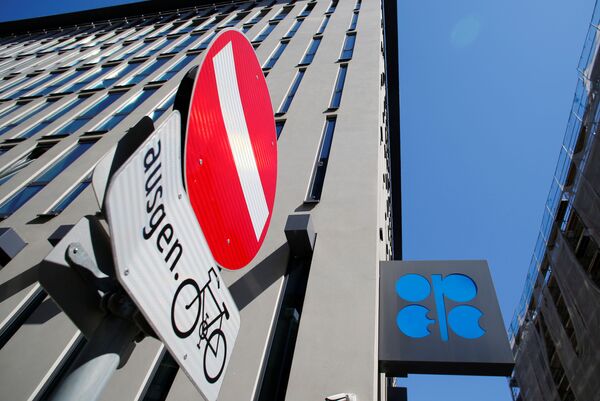Drone footage released on 23 April by the US Coast Guard shows a total of 27 large oil tankers floating off the coast of southern California, having been turned into storage tanks while waiting to dock at ports, reported the Los Angeles Times.
The tankers can be seen anchored at a safe distance from each other near the ports of Los Angeles and Long Beach.
27 oil tankers with nowhere to unload anchored off Californian coast.
— Seaway Maritime News (@SeawayMaritime) April 24, 2020
There are 27 oil tankers with more than 20 million barrels of crude anchored off the coast of Southern California, waiting to offload their cargoes as coronavirus pandemic shatters demand for oil.#MaritimeNews pic.twitter.com/GaeGkSsjv2
Commander Marshall Newberry, from Coast Guard Sector Los Angeles and Long Beach, said in a statement:
"Due to the unique nature of this situation, the U.S. Coast Guard is constantly evaluating and adapting our procedures to ensure the safety of the vessels at anchor and the protection of the surrounding environment… Coast Guard watchstanders, in partnership with the Marine Exchange of Southern California, are closely monitoring each anchorage to manage the increased number of tank vessels we’re seeing off the California coast."
27 oil tankers in the coast of California don't have anywhere to unload - https://t.co/lPdVH0gnmz pic.twitter.com/LnUXoUecjk
— FullAvanteNews (@FullAvanteNews) April 24, 2020
The developments came amid reports that a record amount of crude oil was being stored offshore in tankers after refineries were forced to close down due to the coronavirus lockdown, and demand for crude products plummeted as countries shut borders and installed stay-at-home protocols to slow the spread of the disease.
Some 160 million barrels of oil are currently being stored in large tankers outside shipping ports due to a lack of storage space, Reuters reported citing sources from the shipping industry.
While in February some 10 very large crude carriers (VLCCs) were chartered to store oil at sea, the number has since spiralled to reach 60, and is forecast to even triple in the upcoming months. The supertankers are reportedly mostly located near Singapore and in the US Gulf Coast.
Oil Glut
The ongoing coronavirus pandemic has halted economic activities and travel, generating a new reality characterized by restrictions aimed at dealing with the spread of the virus. The measures have resulted in crippling demand for crude, and the ensuing oil glut.
Oversupply has now reportedly reached around 9 million barrels per day, with experts concerned that the world could run out of storage by May. The plummeting demand for crude triggered unprecedented trading on 20 April, when the price for May oil contracts slipped below zero, breaking every low for oil prices since 1946.
In the face of a one-third collapse in global demand, and an effort to remove some of the oversupply, on 9 April, Saudi Arabia, Russia and other petroleum-exporting nations within OPEC+ agreed to slash their oil production by 9.7 million barrels per day through June.

Since the start of the year, oil prices have plunged on the impacts of the COVID-19 pandemic and a breakdown in the original OPEC+ agreement on production cuts in March, when members failed to bridge their differences on the need to further slash oil production amid the global health crisis.




